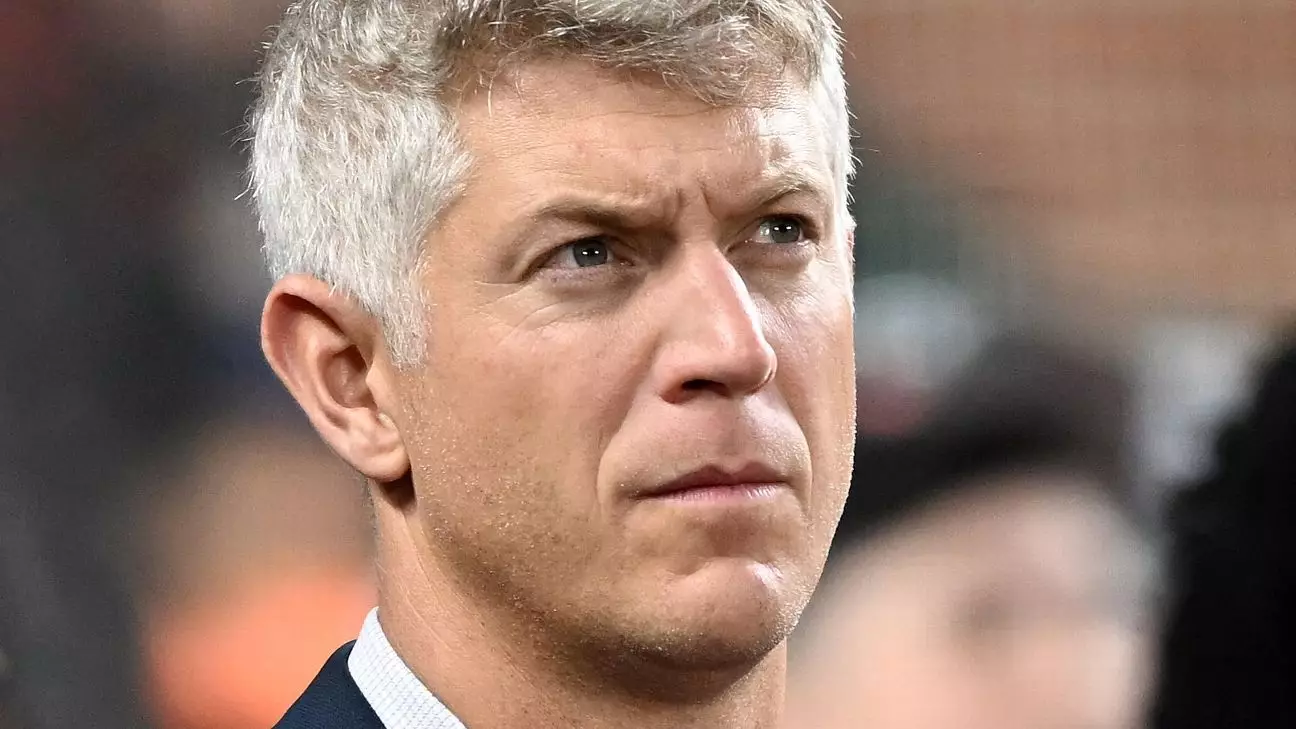The Baltimore Orioles, a team that basked in their success during the 2023 season with an impressive 101 wins, now find themselves grappling with unforeseen challenges as they navigate the tumultuous early months of 2024. In what could only be described as a stark contrast to their previous flourishing performance, the Orioles are learning the hard way that maintaining excellence in Major League Baseball is far more complex than the soaring highs of victory would suggest. As the team flounders with an alarming 12-18 record in April, this once-promising young squad faces its first real taste of adversity—a lesson that many sports teams must learn the hard way.
General Manager Mike Elias has candidly acknowledged the team’s struggles, asserting that familiarity with such setbacks has arrived sooner than desired. His remarks capture the essence of a team confronting its limitations against the backdrop of high expectations. The realistic plight of the Orioles—their dive to the bottom of the American League East and the grim statistics of the league’s worst run differential—highlights the urgency to recalibrate and restore the team to its winning ways.
The Ailing Rotation: An Albatross Around Their Neck
Perhaps the most significant factor contributing to the Orioles’ lethargy is the beleaguered state of their pitching rotation. The injuries to key players such as Zach Eflin, Grayson Rodriguez, and Albert Suarez are ominous harbingers of a potential season marred by struggles on the mound. With traditional stalwarts failing to perform—most notably, Charlie Morton enduring an unenviable 0-6 start and a staggering 9.45 ERA—the margin for error in games has tightened dramatically. Additionally, the poor performances coupled with injuries have shuttered what could have been a solid rotation, leaving the team vulnerable.
Elias has admitted the responsibility lies squarely on his shoulders for the roster’s inadequacies, particularly after taking calculated risks during the offseason. While one-year contracts may appear innocuous, the hefty financial commitment of over $33 million to this underperforming trio now looms large, raising questions about resource mismanagement. In a league where pitching depth is paramount, this unpredictable curveball has left the organization scrambling for solutions rather than accelerating toward its ambitious goals.
A Team in Crisis: Culture vs. Reality
Manager Brandon Hyde’s frustration is palpable as he articulates the sentiment shared among players and coaches alike. The optimism of a young, vibrant team is tempered by the harsh reality of a deepening crisis. The bright spots of the season thus far—two narrow victories against the formidable New York Yankees—serve only as fleeting reminders of their potential but are overshadowed by significant losses, including a disheartening 15-3 debacle.
The self-reflection from the team is commendable; it’s a natural part of overcoming adversity. Hyde’s commitment to staying in constant communication with Elias is vital for fostering a unified front through the storm. Such a collaborative approach may lay the groundwork for perseverance and accountability, essential characteristics for any organization in sports.
Hope on the Horizon: The Path to Recovery
Despite the bleak circumstances, glimmers of hope are embedded within the Orioles’ narrative. With potential returns on the horizon, including Eflin and reliever Andrew Kittredge, the momentum may shift in the coming weeks. Young talents like Rodriguez are also slated to make their return, which may inject life back into the rotation and provide the spark necessary to reignite the team’s passion for winning.
Elias remains resolute in his faith in the talent pool and the group’s ability to revert to form; he emphasizes that recovery is a gradual process of “piece by piece, step by step.” This optimistic viewpoint, while grounded in reality, reflects a strategy focused on long-term success rather than succumbing to immediate despair.
However, the road to recovery requires tangible progress. The team must foster a culture that thrives amidst adversity and instills a renewed sense of confidence among its players. Finding their footing during challenging times will ultimately define this young group and shape their legacy within baseball history.
In sum, while the current state of the Baltimore Orioles is indeed concerning, it is through adversity that the true character of this franchise will emerge. With the right adjustments, both on and off the field, the Orioles could turn this moment of crisis into an opportunity for growth and resurgence.


Leave a Reply